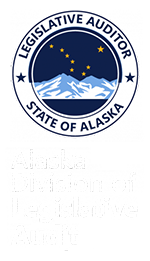| SUMMARY OF: | A Special Report on the Department of Transportation and Public Facilities, Employment Opportunities for Women Engineers,November 8, 2004. |
Purpose of the Report
In accordance with Title 24 of the Alaska Statutes and a special request by the Legislative Budget and Audit Committee, we conducted an audit of the Department of Transportation and Public Facilities (DOTPF) related to employment opportunities for women engineers. Specific objectives of the audit are:
- To review management’s response to the history of settlements and awards concerning gender-based discrimination against women engineers during the past ten years, including Letter of Grievance Resolution No. 96 G-274.
- To evaluate progress in correcting the past underutilization of women engineers, both in terms of workforce composition and employee perceptions.
- To compare the advancement, turnover, and starting pay of men and women engineers.
Report Conclusions
During the last decade, women have overall become better represented within the mainstream career track for engineers at DOTPF. The longevity before and after career milestones is generally comparable for men and women. Turnover in recent years has varied little between the genders. Turnover after rehire is statistically insignificant. Hiring managers have little discretion to vary the pay rates for successful applicants, and we found no evidence that the personnel code is being manipulated to hire one gender at higher rates. Finally, our survey of DOTPF engineers shows that some women perceive that discrimination still hinders their careers.
Findings and Recommendations
Recommendation No. 1
DOTPF’s commissioner should proactively monitor both the statistical and intangible aspects of a gender-neutral work environment.
Evaluations of employment opportunity have traditionally focused upon the degree to which various demographic groups are present or absent. Statistical analysis is an important tool in identifying possible pockets of unequal career opportunities. Targets showing the expected employment by gender are an accepted, though imperfect, measure of an employer’s success in developing a gender-neutral work environment.
We recommend that DOTPF go beyond the heavily-aggregated analyses that it currently conducts for the reports required by law. Using regional gender targets for each engineering job class as guidance, DOTPF can monitor its goals of having a gender-neutral workplace.
We recognize that DOTPF has made considerable improvements in creating a positive work environment for those employees moving through the engineering career ladder. However, DOTPF’s management needs to recognize that proactive and ongoing measures are still needed to meet its goal of a gender-neutral workplace.

